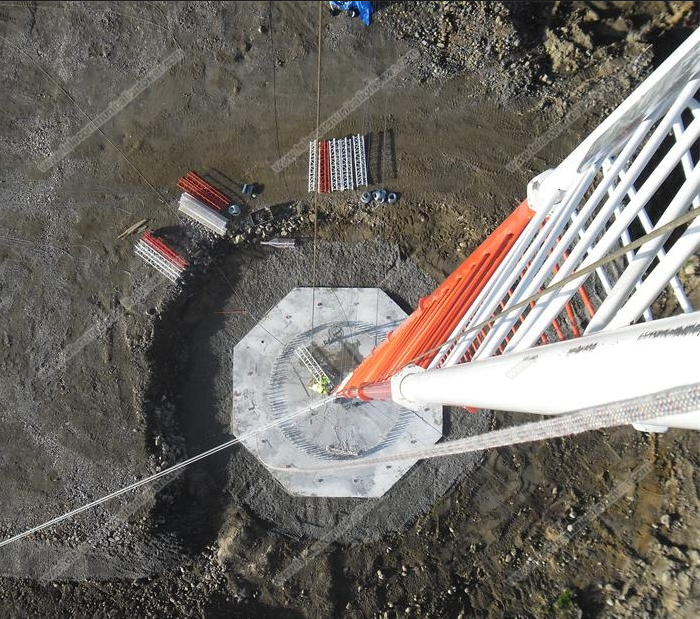A Field Guide to American Communications Towers
The need for clear and reliable communications has driven technology for centuries. The longer the distance of communication, the smaller the world becomes. With cell phones, seamless network coverage and low power consumption are ideal for the ongoing rush to develop and eventually deploy new devices.
Almost all of us carry a cell phone. Whether we use them as phones or not, a significant amount of infrastructure is needed to support them. The most well-known part of that infrastructure is the communication tower. But how much do you know about them?

What are communication towers?
Communication towers of all shapes and forms are all around us. Some towers provide multiple signals. They transmit one-way broadcasts, such as AM/FM radio and TV signals, while also handling two-way cellular communications using a variety of protocols.
Most towers simply lift and support communications antennas, but there are also antennas called mast radiators that actually act as antennas themselves. am radio and other low frequency transmitting towers fall into this category. In this article, I will focus on a specific type of communications tower - the cellular category.

Hot Dip Galvanized Three Legs Telecom Tower
Cellular antennas
Cellular base stations consist of two main things: an array of bi-directional antennas operating on cellular frequencies, and the equipment that makes it possible. Technically, they are called Base Transmitting Stations (BTS). This includes the antennas, signal amplifiers, field processing equipment, and backhaul connections to the core network that cover the different cellular frequency bands. The cell tower is simply the structure that elevates the antennas and supports the equipment.
Not all cellular base stations are on towers. Many of them are built on rooftops, and some are perched on streetlights. Some are designed to go unnoticed and lurk behind exterior walls. They are disguised as indigenous trees, cacti, spires, and even art installations.
Pull wire masts
A wire pull mast is technically not a tower at all. It is a narrow lattice structure, upright and centered on a tie wire fixed to the ground. Tie wire masts are fairly inexpensive to build, but they have a large footprint and require a lot of land. Because of the way they are built, wire masts can reach heights of up to 2,000 feet. Above a certain height, masts are often painted with alternating orange and white aircraft bands to increase visibility.
Lattice towers are self-supporting structures with three or four sides. These are easy to build, easy to climb, and provide plenty of space for installing equipment.
Suburban tower base station installations are usually located on monopole towers. These are smooth poles that look like towering street lights with foot pegs. Monopoles are more expensive and more difficult for workers to climb than lattice towers and wire-drawn masts.

Streetlight Base Stations
If the coverage in an area is uneven, but these gaps do not guarantee a complete cell site, you may find some street light cell sites. These are part of a distributed antenna system, but they are often referred to as small cells. A distributed antenna system takes the power and coverage of a regular cell site and distributes it to several small sites. If a cellular base station is a piece of cake, then a distributed antenna system is a pile of cake. Distributed antenna systems and small cells are also used indoors, often in busy places like offices, hospitals and sports arenas.
Tower components
Tower components will vary depending on the location and needs of users in the area, but you'll see some pretty consistent things from tower to tower. Most obviously, cell towers have several types of antennas that can handle different frequencies and cellular technologies. These are thin vertical rods that are mounted parallel to the tower. In general, the longer the antenna, the lower the frequency it is built for. But the physical size of an individual antenna does not indicate the traffic capacity of a tower. The number of antennas determines the amount of traffic a base station can handle.

Ground Components
What you see on the tower only tells half the story. A lot of equipment is needed to actually route calls and provide signals in the first place, not to mention power and line rectification. All of this is in the cabinets and shelters at the foot of the tower.
The main components on the ground are the base station transceivers. These are the counterparts to remote radio heads. older technologies such as 2G and 3G will have their own transceivers, separate from 4G/LTE. Cell site routers manage the traffic between the base station transceiver and the mobile switch at the central office. If the backhaul is done via microwave, the shelter will have a baseband microwave processor to handle the signaling.
The Future of Stations
One way in which cellular technology is changing is with the advent of device-to-device (D2D) technology, also known as LTE Direct. this turns every D2D-enabled device into part of the transport network. Essentially, if two D2D-enabled devices are about 500 meters away from each other, they can communicate directly without the need for a base station.
D2D consumes less battery than discovery via Bluetooth or WiFi because it occurs at the service layer. And D2D's privacy is superior to cloud-based approaches because it does not continuously track the location of your device. In this case, the future looks pretty good.
Please follow JIAYAO to find more kinds of towers, and we welcome your inquiry.
Comments
Post a Comment